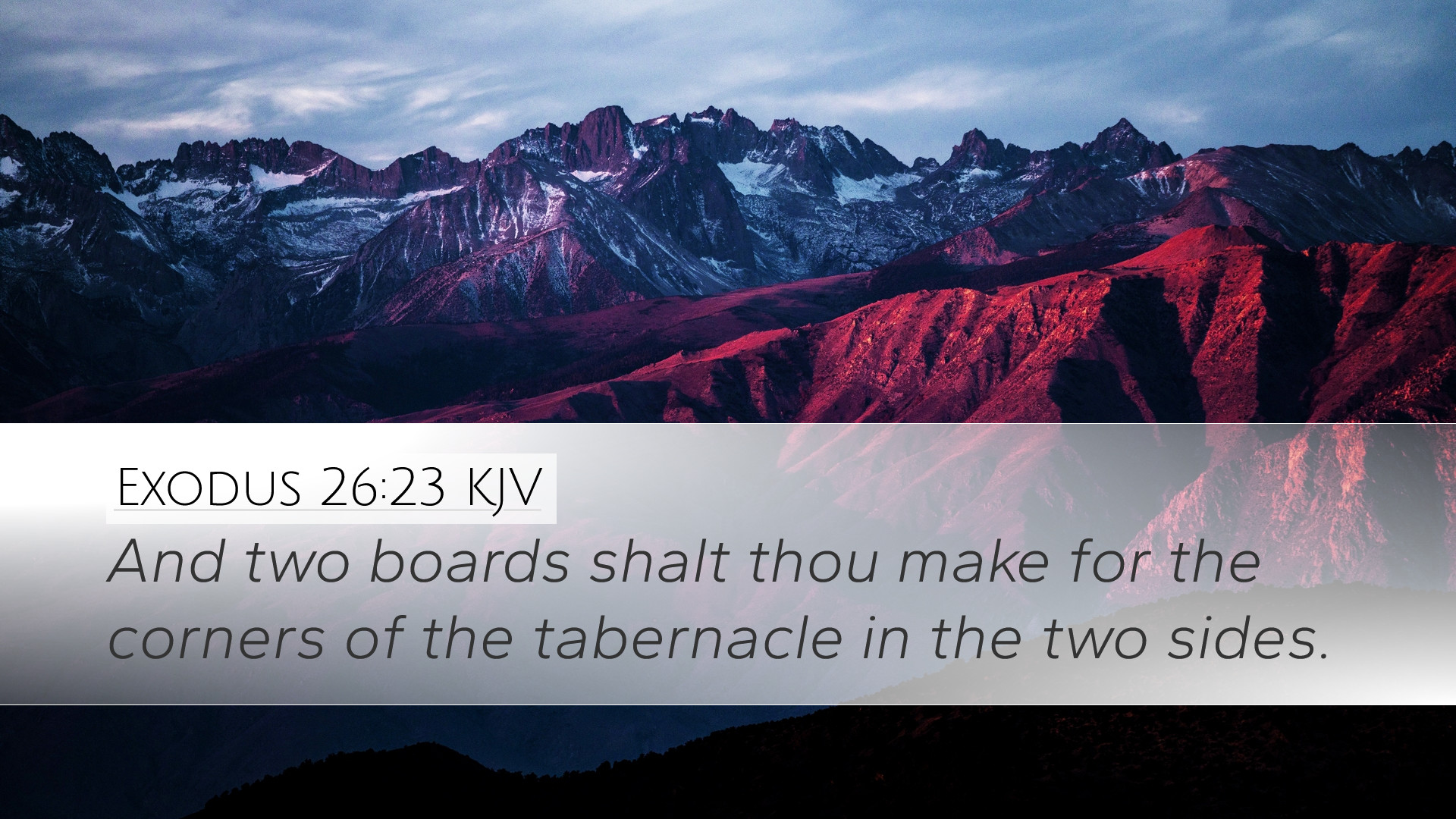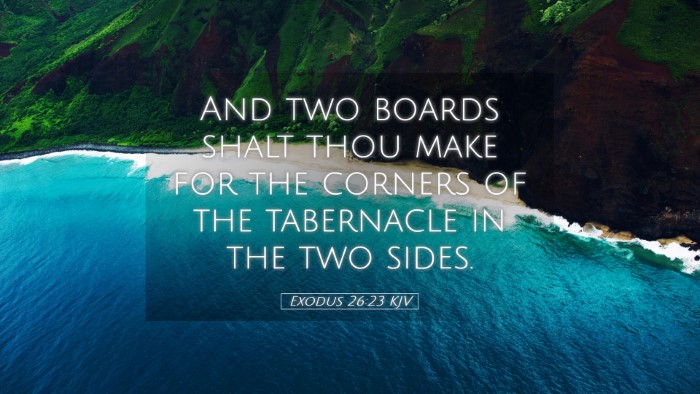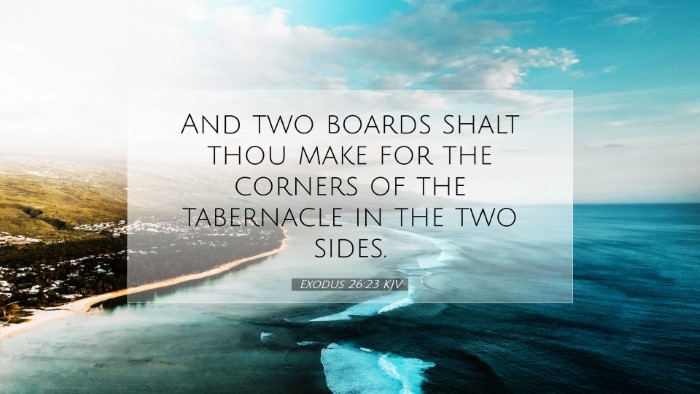Commentary on Exodus 26:23
Exodus 26:23 states:
"And two boards shalt thou make for the corners of the tabernacle in the two sides."
Introduction
The construction of the Tabernacle signifies God's desire to dwell with His people. In Exodus 26:23, the specific mention of the two boards for the corners introduces profound implications for understanding the structure of the Tabernacle and its theology.
Contextual Overview
In this section, we will examine the broader context of Exodus 26, which provides detailed instructions regarding the Tabernacle's design. This was not merely for the sake of architectural beauty but was imbued with spiritual significance.
- Divine Instruction: God gives Moses precise measurements and materials, emphasizing holiness and purpose.
- The Tabernacle as a Symbol: It represents God's presence among His people; every detail reflects His glory and relationship with humanity.
Exegesis of Exodus 26:23
Examining the specifics of the verse leads us to various theological insights and interpretations found in classical commentaries.
Insight from Matthew Henry
Matthew Henry emphasizes:
- Corner Boards: The corner boards signify strength and stability. Henry poetically depicts them as the strength of God's people and their place in His dwelling.
- Union in Christ: The corners symbolize the union of believers, as each board is integral to the structure, much like how the Church is unified in Christ.
Albert Barnes Commentary
Albert Barnes provides a practical analysis:
- Functionality: Barnes notes that the design of the corner boards serves a structural purpose; they bolster the Tabernacle's integrity, symbolizing how God's people are upheld by Him.
- Symbol of Completeness: The design reflects a complete whole made from integral parts, illustrating the completeness found in God's covenants.
Adam Clarke's Insights
Adam Clarke discusses:
- The Significance of Numbers: Clarke points out the symbolism in using two (for the two corners) as representing duality; it signifies both physical stability and the unifying nature of God's selection.
- Heavenly Representation: He notes that the design elements reflect God's ultimate design for humanity, emphasizing God's desire for a relationship with His creation.
Theological Implications
This passage open avenues for rich theological reflection:
- God's Desire for Communion: Every element of the Tabernacle points to God's desire to dwell among His people, foreshadowing the incarnation of Christ, who tabernacled among us (John 1:14).
- Solidarity Among Believers: The corner boards serve as a metaphor for the unity believers must have, each playing a distinct role in the larger assembly of the Church.
- Foundation of Faith: Just as the corner boards support the whole structure, faith in God's promises serve as the foundation for the believer's life.
Application for Ministry and Scholarship
For pastors, students, and scholars, there are practical applications to consider:
- Preaching Christ: The connection between the Tabernacle and Christ should inspire sermons that draw parallels between the Old Testament and the New Testament.
- Encouragement of Community: Highlighting the need for unity within the body of believers can lead to stronger, healthier church environments.
- Research on Symbolism: Biblical scholars might delve deeper into the symbolism behind the materials and measurements of the Tabernacle, revealing layers of meaning that pertain to God’s salvation plan.
Conclusion
Exodus 26:23, while seemingly a simple architectural detail, holds profound insights into the nature of God’s relationship with His people. The corner boards not only provide structural stability but also serve as a reminder of the unity, strength, and purpose found in the community of believers through Christ.


